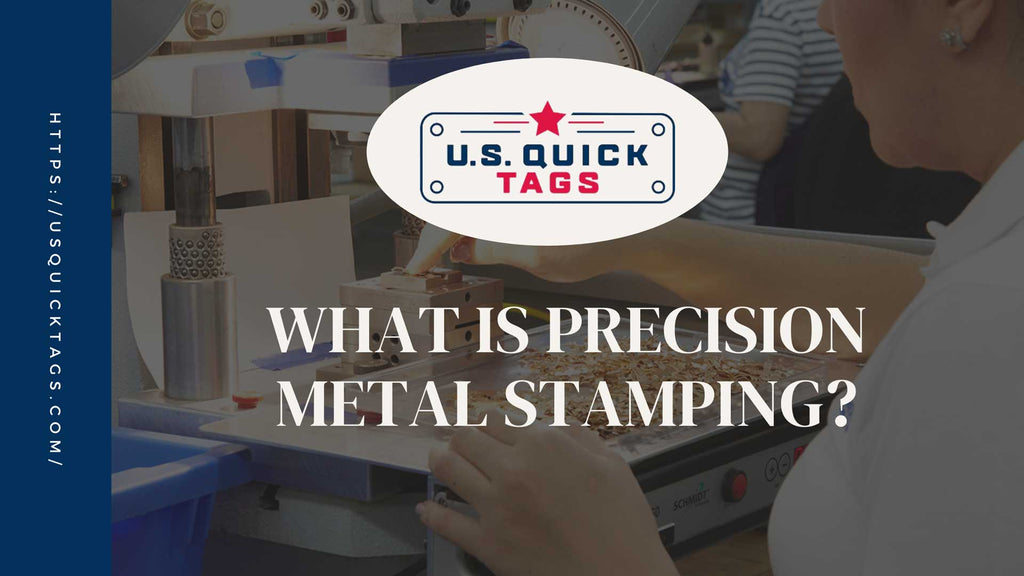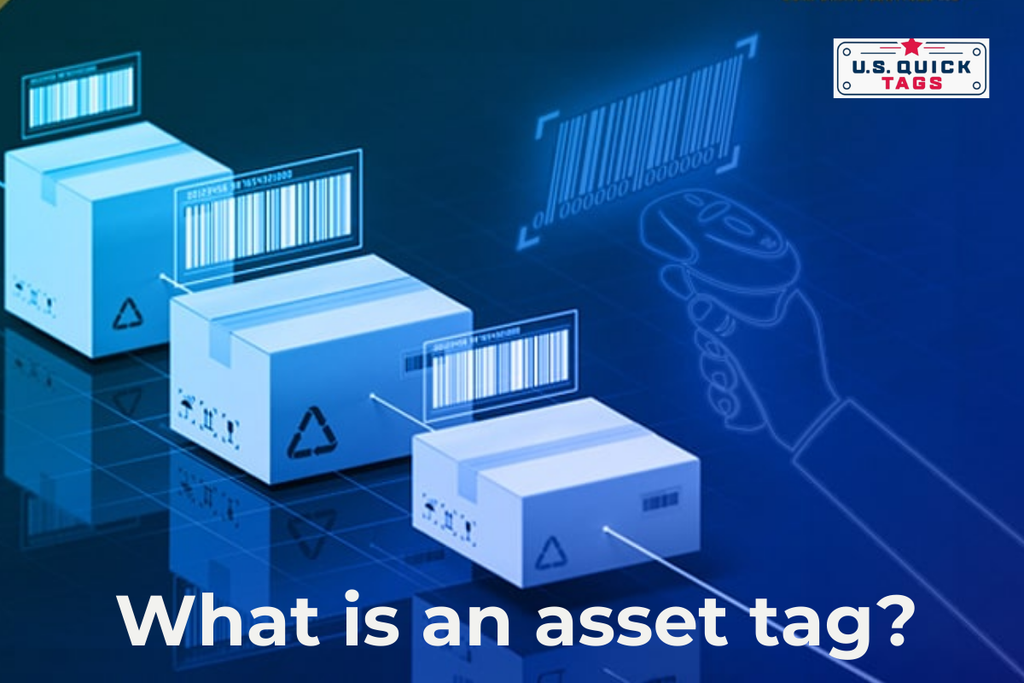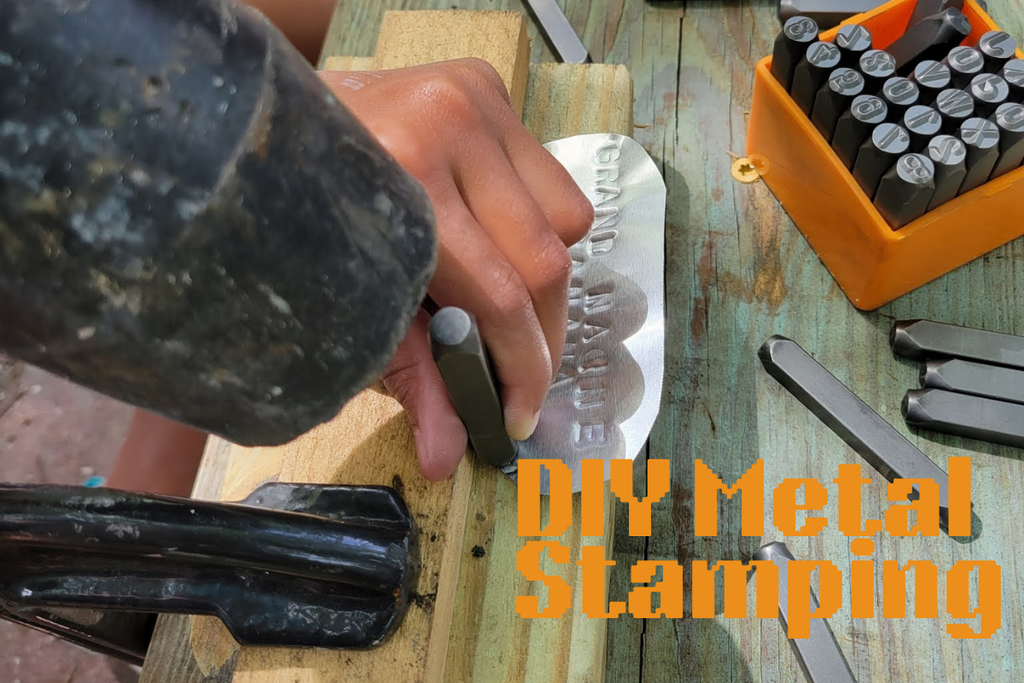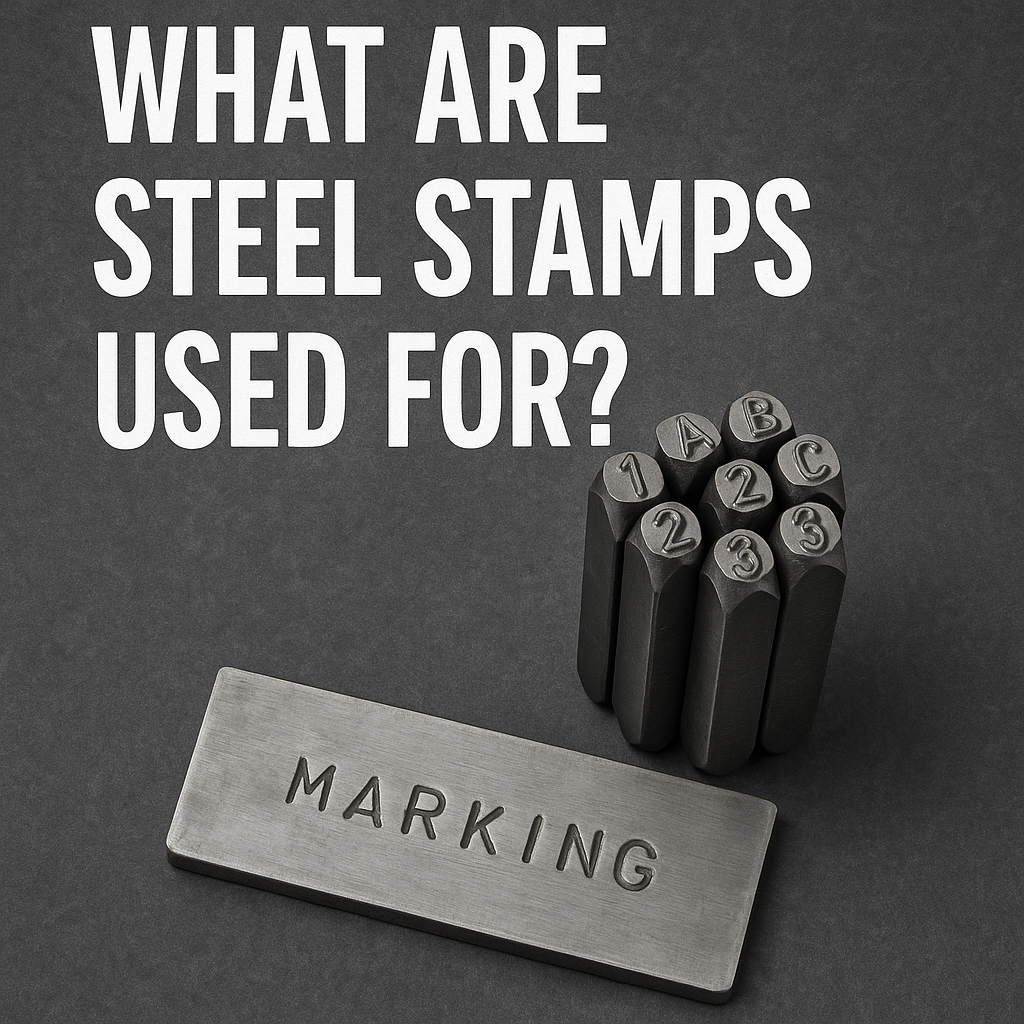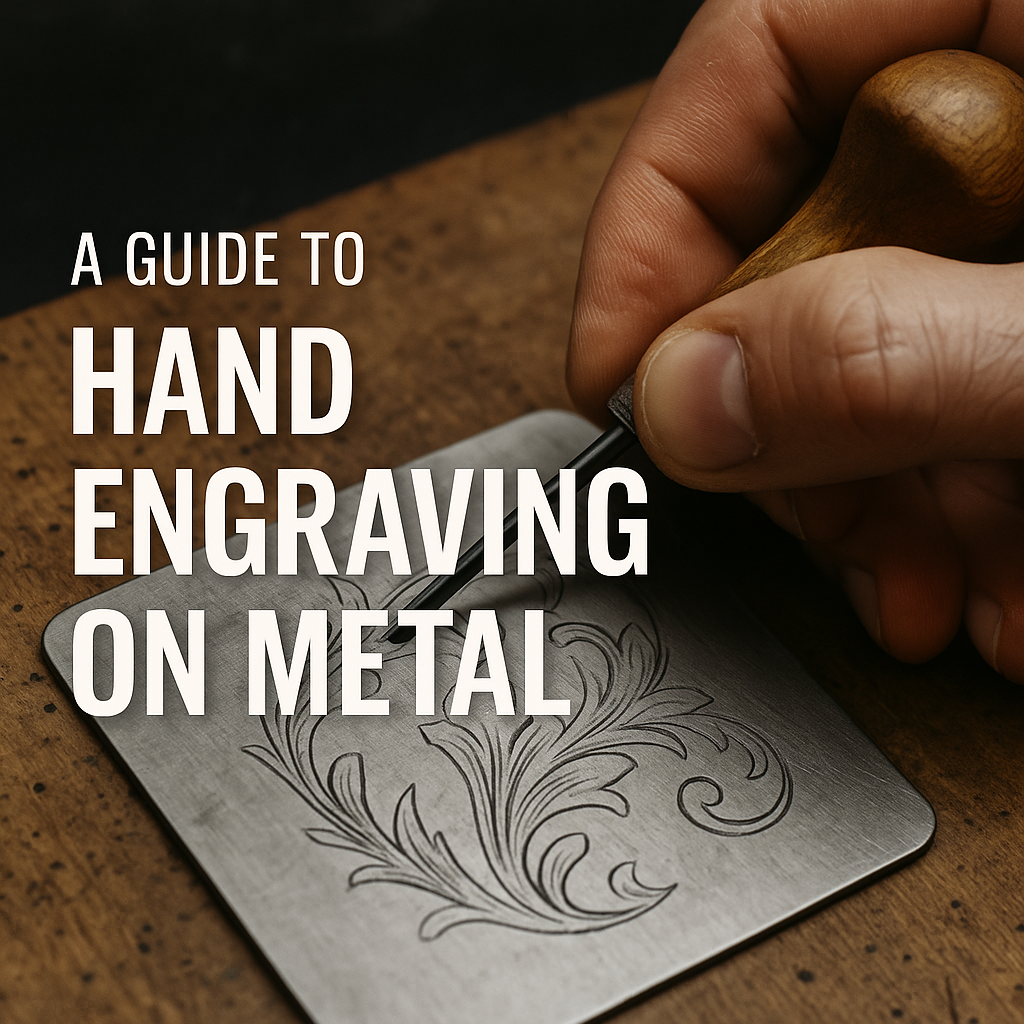What Is Precision Metal Stamping?
- USQuickBlogs
- 27 May, 2022
Most of today’s machinery, appliances, and tools wouldn’t work without precisely-cut, custom-designed metal parts that ensure their functioning and efficiency. And, thanks to today’s progressive stamping - or progressive die - technologies, these parts have never been so accurately produced.
But how does this high-precision stamping process work? In this guide by US Quick Tags, you’ll find everything you need to know about precision metal stamping, its advantages, and considerations to be made before sending your order. Start below.
What Is Precision Metal Stamping?

Precision metal stamping - also referred to as progressive metal stamping - is a manufacturing technique used in metalworking to modify the metal raw material through an automatic feeding system.
Thanks to precision stamping techniques and cutting-edge precision stamping machines, this process allows companies across a range of industries to obtain highly precise metal parts at a fraction of the cost.
But how does the precision metal stamping process work? This metalworking technique uses specifically-designed machinery that can be fitted with custom dies. Depending on the complexity of the parts needed, the manufacturer might use one of two mechanical press techniques:
- Single-stage stamping - this process is efficient for simpler pieces and only requires one stroke of the press
- Series operation - this technique is used for more complex projects that require a series of two to five presses.
While you can certainly hand stamp metal tags, the automated precision stamping process maximizes accuracy and cost savings while reducing the chances of costly and dangerous human errors.
Additionally, precision metal stamping allows you to imprint the metal with micro stamps, add complexity, and eliminate printing errors for large order volumes.
How Does Precision Metal Stamping Work?

The high levels of precision and accuracy offered by precision metal stamping make this technique ideal to meet the needs of sectors like healthcare, medical equipment, and aviation. However, the process might differ slightly from industry to industry.
Generally, the journey of raw metal sheets to become accurate metal parts start with the computer modeling phase. During this step, the ordering company or individual can visualize the finished product and correct any error or defect.
After the testing phase, the design is transmitted to the precision metal stamping machines that will create the finished product.
While the process might seem standard and straightforward at first, one of the main advantages of precision metal shaping is its high versatility and customization potential. So, after selecting the best flat sheet metal for your project’s needs, you can choose what technique to apply to the raw material, including embossing, stretching, or bending.
Additionally, depending on your desired production run, you and your manufacturer will agree to use one of the following production systems:
- Hard tooling - this is a fully-automated precision metal stamping process that reduces human error and boosts the efficiency of high-volume orders
- Soft tooling - this process utilized a single mechanical press and it is best suited for smaller production volumes
- Stage tooling - this is a precision stamping method that combines automated action with tasks performed by technicians.
Considerations To Make Before Choosing Precision Metal Stamping

Precision metal stamping is an excellent solution for most industries and projects - especially if you are looking to use specialty parts to identify or mark important equipment. However, there are some considerations worth keeping in mind before placing your order:
- The prototype design will impact the quality, durability, and safety of the finished product.
- Since it is hard to make changes during the production run, a mistake in the prototype can compromise the entire order.
- Choose your metal wisely as different metals will react differently to the pressing process
- While for large order volumes precision metal stamping can be cost-effective, it might not be so for smaller volumes
Precision Metal Stamping Materials
As seen above, different materials react differently to undergo the precision metal stamping process. While plastics are much easier to work with, metals come with intrinsic characteristics that are worth keeping in mind.
The experts at U.S. Quick Tags can help you make a decision. Here’s an overview to help you get started:
- Specialty metals - these are tailor-made alloys like titanium and nickel. They are used for specific or complex parts
- Non-ferrous metals - metals like zinc, copper, brass, as well as some aluminum alloys, are highly versatile and durable but can be costlier.
- Ferrous metals - materials like cast iron and iron-based alloys like stainless steel are lower-cost options for higher precision parts
You might also choose precious metals like gold or silver for your project. While these materials are particularly expensive, they come with unique characteristics that make them ideal in certain industries.
The Benefits of Precision Metal Stamping

Precision metal shaping offers a wide range of advantages. These include:
- A fully automated process that reduces the chances of human errors
- High volumes of the same design can be produced efficiently and at a fraction of the cost
- Automated mechanical presses don’t require manual intervention and provide an end-to-end solution to manufacturers
- Precision metal stamping significantly reduces the costs associated with creating complex parts by limiting labor costs, preventing costly errors, reducing waste, and boosting production efficiency.
- Thanks to microstamping solutions, precision metal stamping processes are suitable for industries with a low tolerance for errors, such as the aviation and aerospace industries.
One of the greatest advantages of metal stamping complex or specialty parts is that the process eliminates the chances of error, making the final product incredibly reliable - even in situations where it can make a difference in safety levels (i.e.: when used for safety metal tags).
Common Precision Metal Stamping Applications
Some of the industries that leverage the benefits of precision metal stamping techniques include:
- Aerospace and aviation
- Healthcare and medical equipment
- Automotive and car manufacturing
- Electronic appliances and consumer tools
- Electrical systems and renewable energy industry
Thanks to the unparalleled degree of customization that precision metal stamping offers, industries can also obtain specialty parts and components and custom shapes.
US Quick Tags: Custom Precision Metal Stamping Services You Can Trust

While the metal stamping process is flawless and suitable for most applications, not all manufacturers are created equal.
That is why, before placing your order, you would review a company’s reputation, history, and reviews. Here at US Quick Tags, we have years of experience in working with metals, and we can help fulfill your needs for high-quality metal stamping services.

